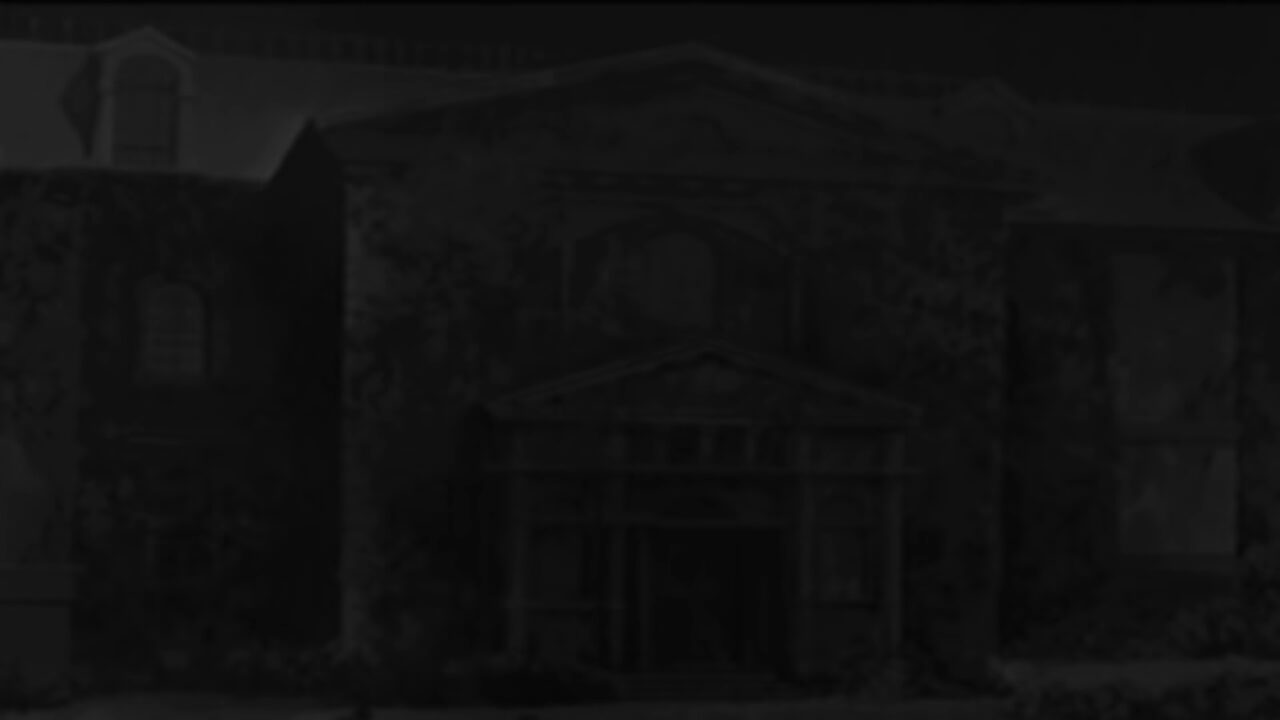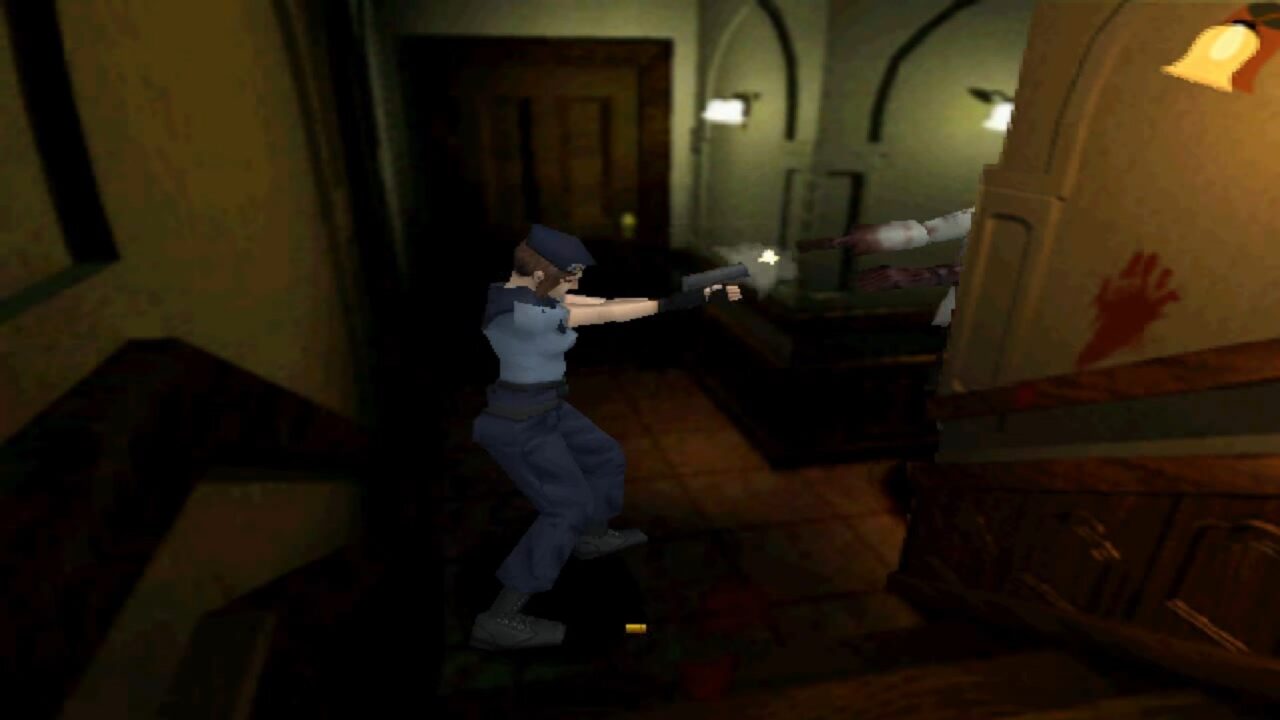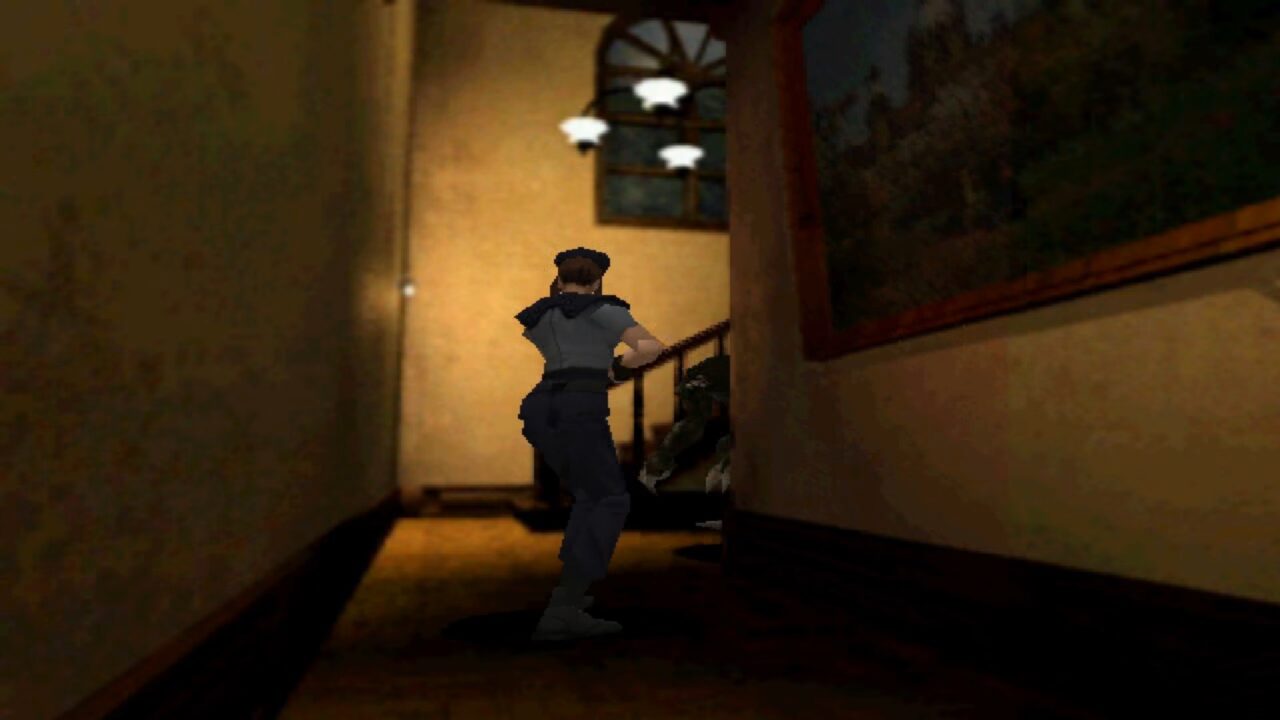Hell House – How Resident Evil Unsettles With Environments

The Spencer Mansion feels like an antagonist itself in Resident Evil. This (sort of) innocent-looking, resplendent home filled with tight corridors and secret places seems to be out to get the player as well, forcing them into contact with the undead whenever it isn’t just trying to kill them outright with its strange mechanisms. It’s a hellish little haunted house, one that keeps throwing new dangers at the player through its design.
How does a location itself get under the player’s skin? For starters, this place is a massive maze. Its hallways wind all over the place. Its rooms sprawl out in a bizarre array. Strange art galleries, rooms full of monstrous plants, and looming libraries lie in every direction, and most of the routes to these places are locked. It’s not too hard to navigate once you have enough keys, but when you first arrive, this place is a snarl of paths with few ways out. You can create new ways to escape over time, but at first, it’s a challenge to get around.
This makes for some additional stress as you’re dodging Resident Evil’s zombies, dogs, and other nasty creatures. Doors surround you in almost every hallway and path, offering tantalizing escape routes from the enemies that are chasing you. It always looks like you’re going to be able to escape relatively easily. I’m sure glad zombies haven’t figured out how to work doors. Still, a quick escape is almost never the case, as most routes are locked or blocked.

This means that your typical encounter starts to raise your tension levels as a zombie gets closer to you. Maybe you’re low on ammo or healing. It seems more prudent to run, so you rush to one of the doors that are available to you. You feel a twinge of relief as you make contact with the door, hitting the button to open it. Locked. You move to another. Locked again. The zombie is still creeping toward you, only hesitating as you fiddle with the doorknobs. That tiny bit of relief you felt comes crashing down. Hopelessness settles in as you wonder if you can use any of the escape routes from this room.
The map in your inventory might tell you that there’s several ways out of your current situation. This initially gives most players this false sense of security – one you don’t keep for long. When you find that few of the doors will open, it creates a nervousness as you work through Resident Evil. Now, you don’t know if you can rely on the doors you see to escape. You might think you see a safe way out, but it’s just a trap. I tried to plan my route through most rooms, relying on the map to navigate around zombies and escape. With so many locked doors, that rarely worked out, forcing me to enter situations I wasn’t prepared for, making every step a little more frightening.
This is all on top of the surreal rooms and layout of the place. Everything winds and twists with this need for keys, turning the relatively-normal layout of the mansion into a maze. Place is a concrete thing within the game, but these endless dead ends feel like your path through the game is always shifting. It’s like the game’s halls are purposely antagonizing you. Every path leads to locked doors. Every time you think you have found a safe way to escape, you hit a dead end. Your plans on how to navigate a room always seem to fail. It’s just an ordinary (sort of) place with locked doors, but through clever design, it feels bizarre and hostile.

Viewpoints strengthen this sense that the mansion itself is after you in Resident Evil. I mentioned this in the other anniversary articles, but the camera is always looking at you from some bizarre, voyeuristic angle. You feel like the viewpoint is from someone is watching you from some security cameras. Also, these shots often hide enemies or prevent you from peeking around corners to assess your route. Not only is it hard to figure out where to go in the grand scheme, but it feels like you need to constantly reassess your route as the angles continually change every few steps. Each room itself becomes hard to parse. You feel like you can’t prepare simply due to your viewpoint.
And each hall feels far too tight. The walls are just too close together. The rooms are full of furniture that gets in the way, keeping you from freely escaping. You can’t just leap over this stuff, either. So now, a bed or a table can create a dead end where you might get stuck. A simple bedroom can become a trap because you’re running from a zombie and find yourself stuck between some furniture. A hall can be so tight it’s hard to get away from the undead lurking in it. It feels like everything, down to the furniture layout, has been set up to kill you in some way. Stupid video game logic. JUST JUMP OVER THE BED. DO YOU WANT TO DIE BECAUSE YOU WON”T JUMP OVER THE BED, JILL?
That’s not even factoring in the bizarre items within Resident Evil’s mansion. Crushing ceilings. Weird tiger statues where you have to replace the eyes. Art galleries filled with hostile crows. The Spencer Mansion has clearly been built by someone with unsettling tastes. Not only does this keep you from making reliable progress, again using the environments to trap you, but it also feels like the kind of place where something horrible happened. Eyeless taxidermied animals kind of make you feel that something bizarre has been going on here, right? Well, I suppose the zombies do, too.

As you dig deeper into the place, you start finding stranger places, too. Not just rooms filled with giant deadly plants or colossal monstrous snakes, but the hidden facilities of the people responsible. Layer upon layer of normalcy steadily fades away as you explore. While it seems like an ordinary, if strange place at first, little things increase your fears as you explore. It shifts to absurd, bizarre mechanisms, then gives way to the hiding places of impossible monstrosities, and soon to the cruelty that birthed all of these horrors. At every step, the house shows more reasons to be wary of it.
This also works from a gameplay perspective. If you take the time to kill zombies in this game, they stay dead. This was pretty impressive at the time, since most titles were full of respawning foes. I still hate you for this, Ninja Gaiden. In this game, though, they stayed down. If you cleared out a room, it would stay safe. This let you carve your own routes through Resident Evil, creating safe paths for yourself as you played. It gave players some sense of control over things.
This feeling was only there to be taken away. Eventually, enemies get come back to the rooms you once thought were safe, creating frightening surprises. Hunters lurk near those save rooms you’d cleared paths to. That hope you feel as you approach them gets dashed as you hear their slapping footsteps rushing your way. The game gives you the ability to clear its rooms to create your own safe paths through this hostile house, but only does that so it can take that feeling away. Now, hours in, you’re just as scared to enter old rooms because you have no idea how dangerous things are inside there now.
Resident Evil’s environments themselves are out to unsettle the player through their layouts and perspectives, and through the places and things they hide. They force the player into dangers they can’t see, keeping them off-guard. Then, just when they feel safe, the game takes those feelings of comfort away with new dangers. The Spencer Mansion, therefore, feels like an enemy all its own, adding to the many ways this impressive horror classic keeps players afraid after all these years.
Categorized:Editorials
